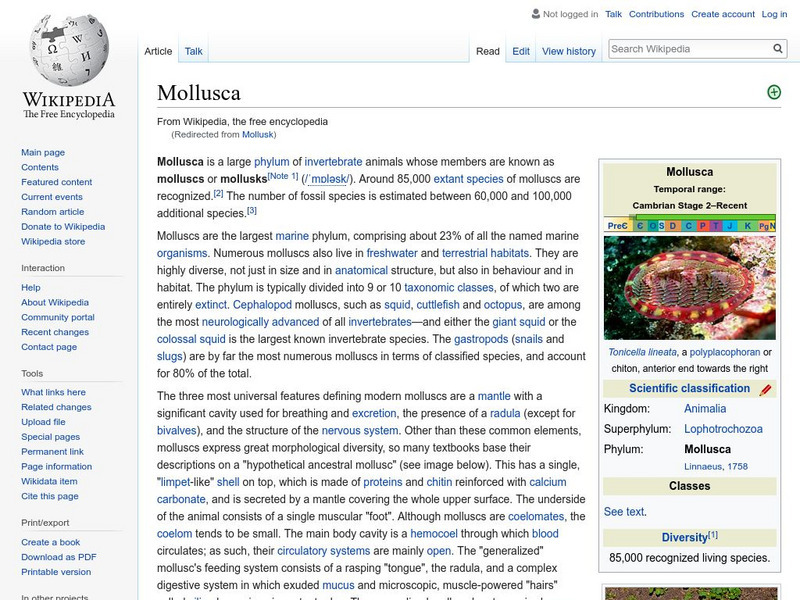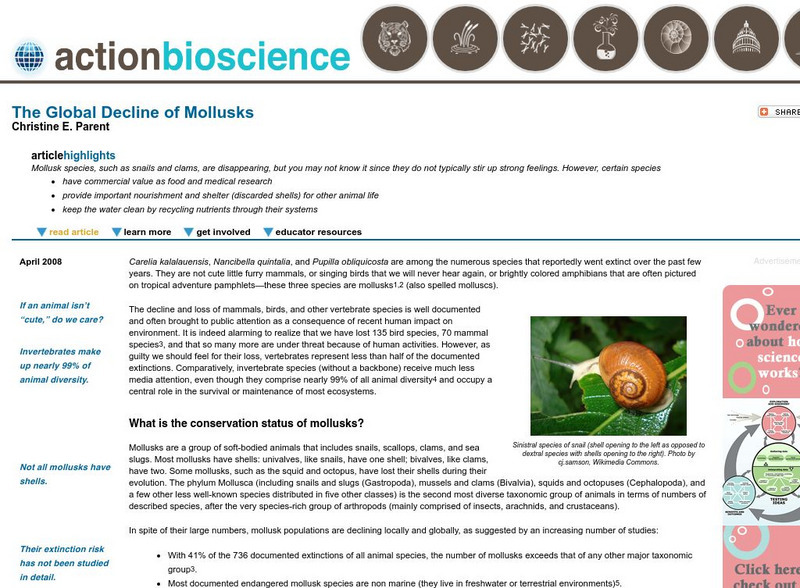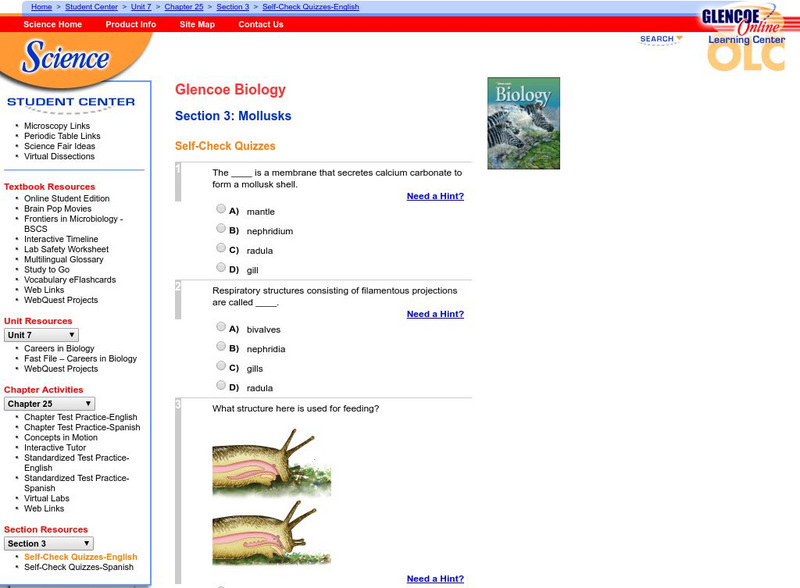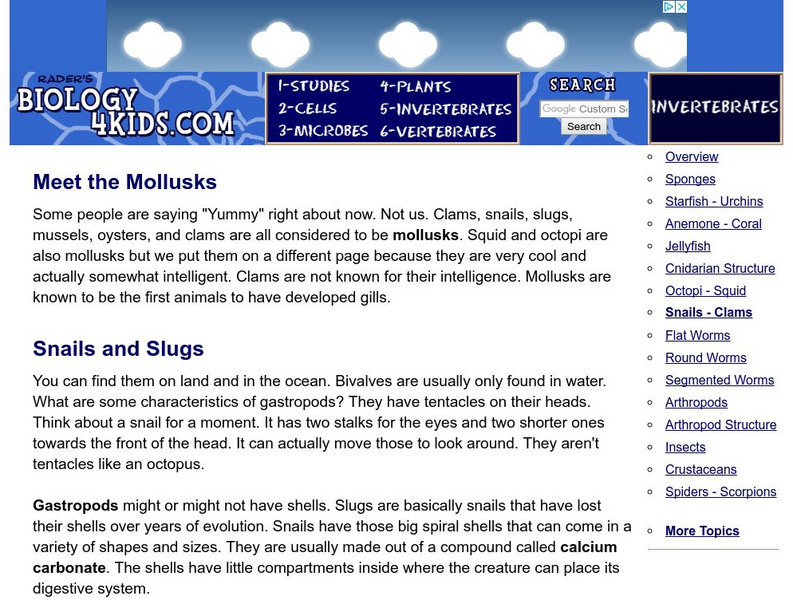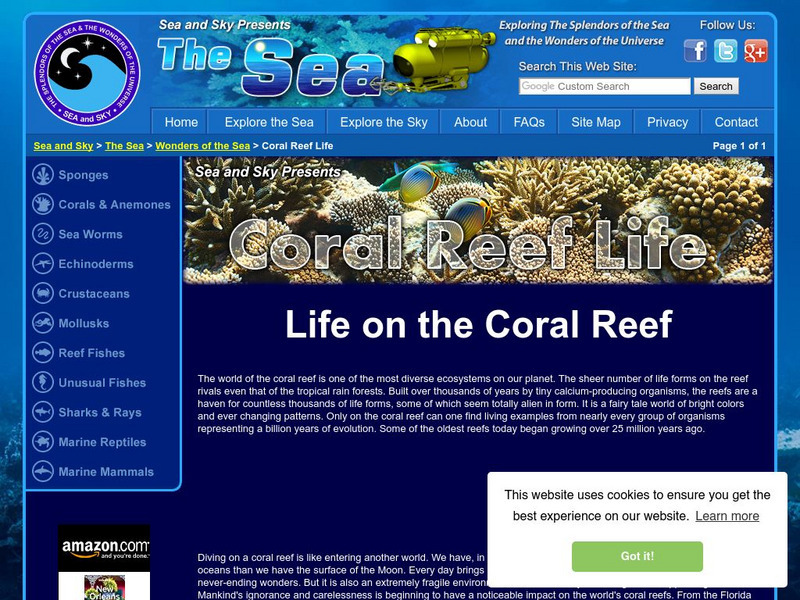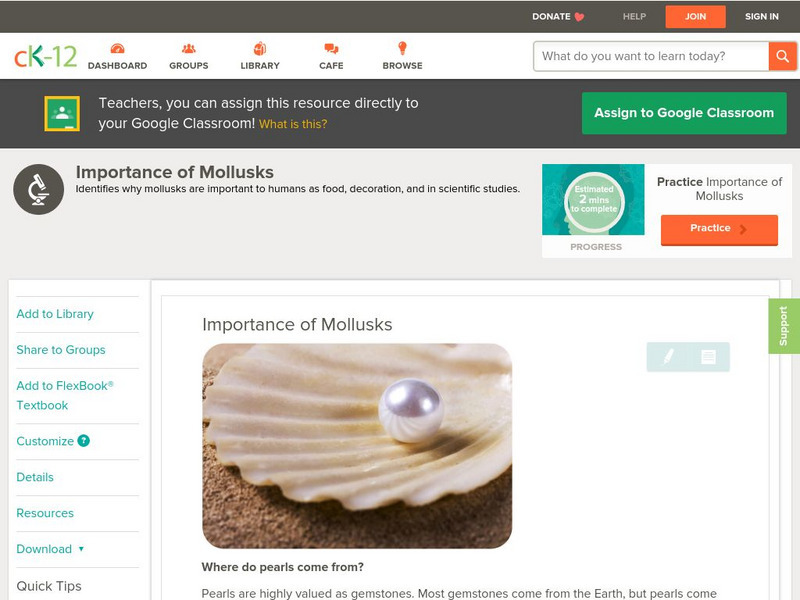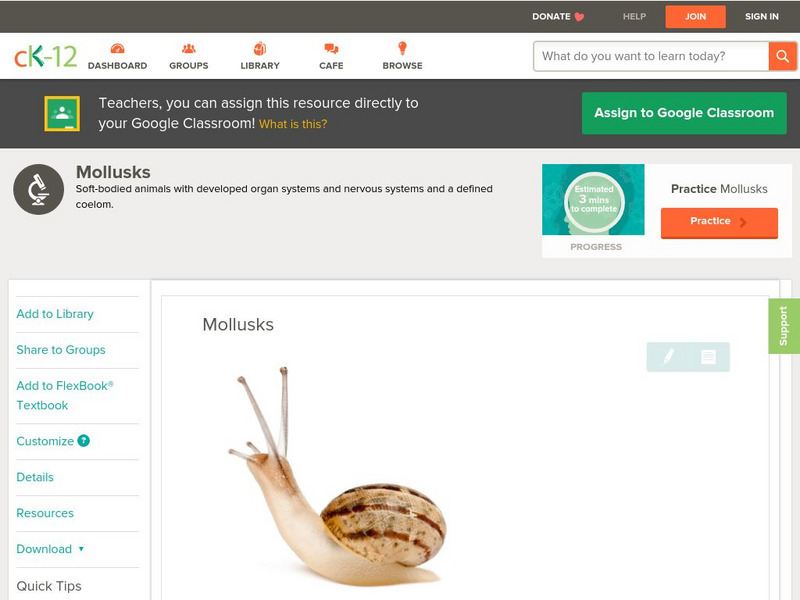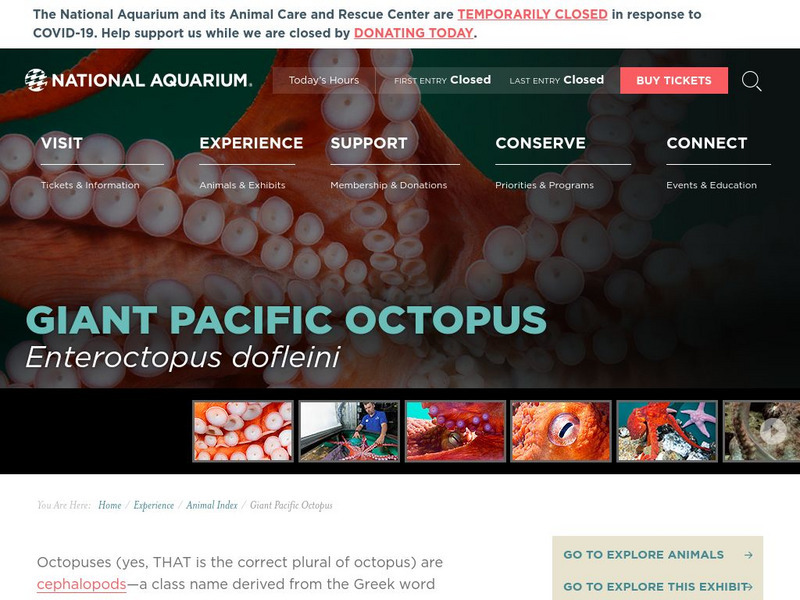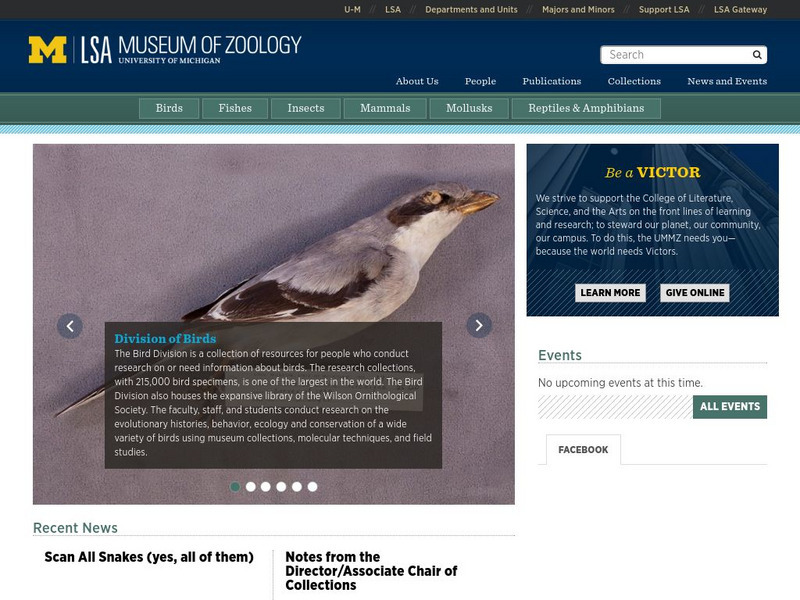Wikimedia
Wikipedia: Mollusk
Wikipedia offers detailed information on mollusks, a large and diverse phylum including shelled sea animals and the octupus.
American Institute of Biological Sciences
Action Bioscience: The Global Decline of Mollusks
You can help! Species of mollusks are disappearing from our marine sources. While it might not be obvious to the casual beach-goer, these shelled creatures provide food and shelter, medical research, and help keep our waters clean.
PBS
Pbs: What's Killing the Oysters?
A special report provided for by PBS on what's killing the oysters of Ago Bay in Japan.
Other
Underwater Photo Tips: Cuttlefish
This site gives great information on the camouflage and communication methods that cuttlefish use, along with their mating habits.
Other
Octopus of California
Twenty great pictures of octopi from California. This site also offers up close pictures of invertebrates, squids, and tidepools.
Other
The Cephalopod Page: What Behavior Can We Expect of Octopuses?
The navigation and spatial skills, tool use, play, and personalities of octopuses are covered in the studies discussed in this article.
Other
Wonders of the Sea
Good general description of the phylum with subordinate descriptions in each of the classes.
McGraw Hill
Glencoe Biology: Mollusks: Self Check Quiz
Take this five question multiple-choice question quiz over the Phylum Mollusca.
Quia
Quia: Animal Facts Scavenger Hunt
At this website you are given ten questions to answer and links to three websites where you can find those answers.
University of Massachusetts
University of Mass.: Freshwater Mussel Reproduction
This site, which is provided for by the University of Massachusets, gives a very good example of a typical bivalve reproductive cycle.
Biology 4 kids
Biology4 Kids: Clams and Snails the Mollusks
A concise beginners research page highlighting the major characteristics of the Mollusks.
Washington State University
Washington State University: Ask Dr. Universe: How Do Mollusks Move Around the Ocean?
Dr. Universe went to a friend who is a marine biologist to find the answer to this probing question by Michel. Find out all about mollusks.
A-Z Animals
A Z Animals: Animal Facts: Cuttlefish (Sepiida)
Illustrated entry describes Cuttlefish with details about their habitat, diet, breeding, and physical characteristics.
American Geosciences Institute
American Geosciences Institute: Earth Science Week: Mystery Mollusc
Students become marine biologists, and their goal is to characterize the biological communities that live on or near the seamount in the Monterey Bay area. There, they must identify a mystery mollusk.
Famous Scientists
Famous Scientists: Shintaro Hirase
Ever wondered what a malacologist studies? Find out by reading this short biography about Japanese malacologist, Shintaro Hirase.
Other
Sea and Sky: Mollusks
This illustrated article describes several different types of reef mollusks ranging form snails and clams to the chambered nautilus.
Other
Sea Sky: Reef Life
The coral reef, its composition and inhabitants are explored here in detail. With additional information about the life that inhabits a coral reef.
American Museum of Natural History
American Museum of Natural History: Giant Squid O Logy Card
Flip over this interactive OLogy card and start learning bite-size pieces of useful information about the giant squid, including details regarding its 2006 discovery.
University of Florida
Florida Museum of Natural History: Homepage
This site from the Florida Museum of Natural History gives the current events, information about the museum, exhibits and public programs, research and collections, links, etc. to the Florida Museum of Natural History.
CK-12 Foundation
Ck 12: Life Science: Importance of Mollusks
[Free Registration/Login may be required to access all resource tools.] Mollusks are important in a variety of ways; they are used as food, for decoration, in jewelry, and in scientific studies. They are even used as roadbed material and...
CK-12 Foundation
Ck 12: Life Science: Mollusks
[Free Registration/Login may be required to access all resource tools.] Mollusks are invertebrates that usually have a hard shell, a mantle, and a radula. Learn more about mollusks in this learning module produced by CK-12.
CK-12 Foundation
Ck 12: Life Science: Types of Mollusks
[Free Registration/Login may be required to access all resource tools.] There are approximately 160,000 living species and probably 70,000 extinct species of mollusks. They are typically divided into ten classes, of which two are...
Other
National Aquarium: Giant Pacific Octopus
A thorough site that describes the physical characteristics of the Pacific Octopus, examines its diet and habitat, and references its natural predators.
University of Michigan
University of Michigan: Museum of Zoology
See the Museum of Zoology where visitors can explore the museum's resources.


